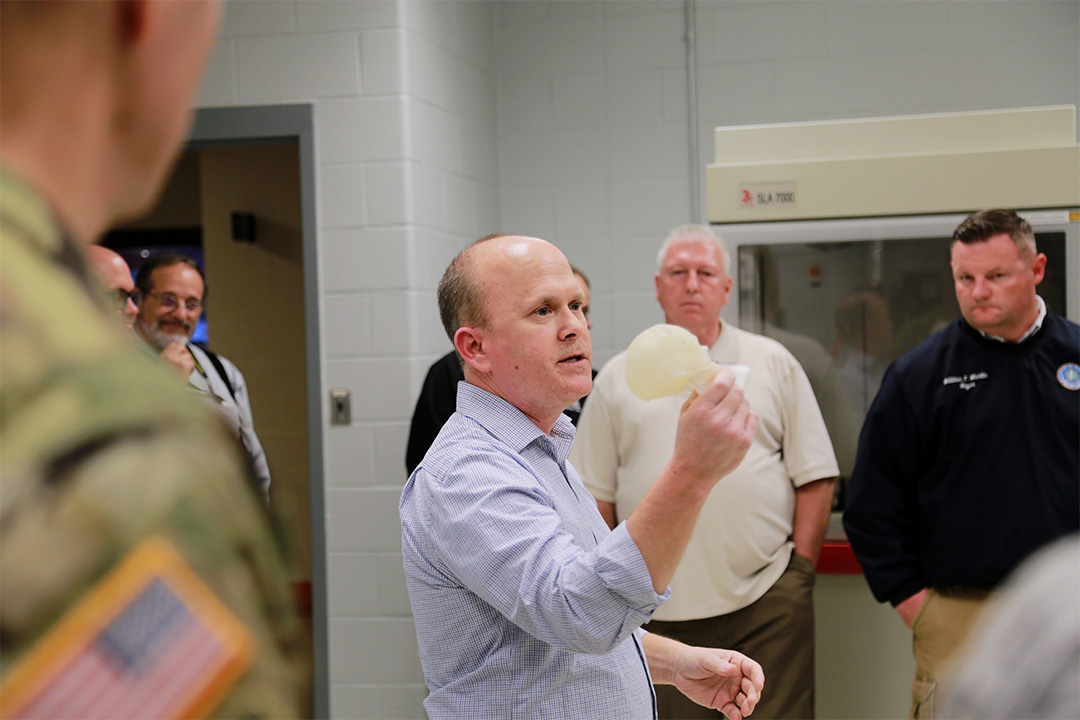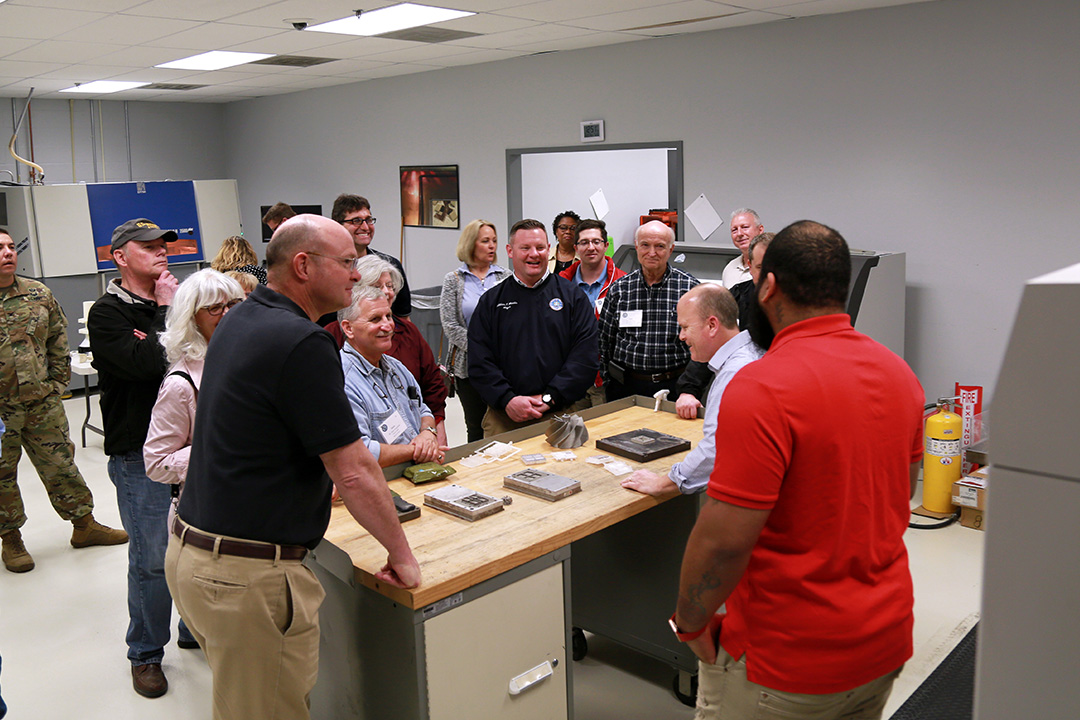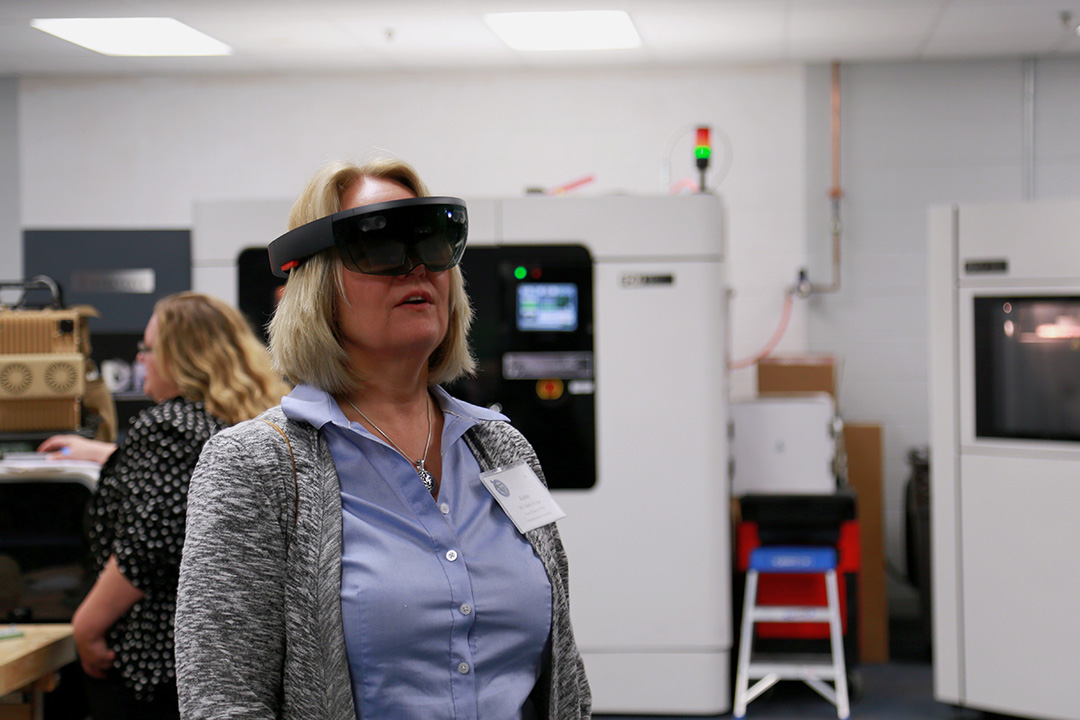// NEWS RELEASE
State and Local Leaders Visit Chemical Biological Center during Immersion Day
Visit provided opportunities for networking and partnerships among attendees
CCDC Chemical Biological Center Public Affairs | April 30th, 2019
State and Local Leaders Visit Chemical Biological Center during Immersion Day
Visit provided opportunities for networking and partnerships among attendees
DEVCOM CBC Public AffairsApril 30th, 2019

Rick Moore explains how 3D printers at the Center have aided in forensic investigations. (Photo credit: Shawn Nesaw, CCDC Chemical Biological Center)
Maryland delegates and local county officials visited Aberdeen Proving Ground and the CCDC Chemical Biological Center to gain a better understanding of the full breadth of capabilities and consider opportunities for future partnerships
Maryland delegates and local county officials were welcomed to Aberdeen Proving Ground (APG) recently to engage with the U.S. Army in an Immersion Day.
The event aimed to familiarize state officials with the unique Army capabilities APG offers the Army, the warfighter and nation.
Throughout the day, Army, state and community leaders took opportunities to have meaningful discussions about Army Futures Command and the role it plays in research, development and testing; additive manufacturing both at APG and state and county levels; APG-South improvements; APG linkages to other Maryland installations and environmental concerns.
Part of Immersion Day included a visit to the U.S. Army Combat Capabilities Development Command (CCDC) Chemical Biological Center. Visitors toured the Center’s Advanced Design and Manufacturing (ADM) facility which houses a comprehensive suite of manufacturing, prototyping and fabrication capabilities designed to provide robust CBRNE product development solutions for the U.S. Army and the U.S. Chemical and Biological Defense Program.
“Overall, ADM supports industry, academia and government agencies and organizations,” stated Mark Schlein, Associate Director of Product Development, during his welcoming remarks. “We also have a public-private partnership, the Regional Additive Manufacturing Partnership of Maryland that links the community and the Center together.”

Schlein, along with Richard Moore, Rapid Technology and Inspection branch chief, escorted visitors through the Maker Space facility, a component of ADM’s 7-acre footprint. They highlighted key capabilities such as 3D printing, virtual and augmented reality (AR) and computer aided designing.
“We have roughly 40 different additive printers in this space,” Moore explained. “We hold science, technology, engineering and mathematics events here and we’re currently working with a Science and Math Academy student who is using this space to develop 3D printed material made from recycled plastic water bottles.
“Maker Space provides an outlet for our scientists and engineers to fabricate their ideas using the technology available here, possibly turning an idea into a program of record one day,” he said.
Visitors inspected the interior of an Army vehicle using AR, inquired about specific large-scale 3D printing capabilities and learned how the Maker’s Space at CCDC Chemical Biological Center supports scientists and engineers in rapid prototyping of warfighter support concepts.

Moore concluded the tour by sharing how the local community has supported the Center, introducing Ryan Gilley and Rashad Scott, both of whom grew up in the area, attended secondary school locally with a focus on design and fabrication and landed careers at the Center supporting the Army and science communities.
The visit provided local and state leadership an opportunity to peek behind the Center’s curtain to gain a better understanding of the full breadth of capabilities and consider opportunities for future partnerships for not only the good of local communities but the entire state of Maryland.
The U.S. Army Combat Capabilities Development Command (DEVCOM) leads in the discovery, development and delivery of technology-based capabilities to enable Soldiers to win our nation’s wars and come home safely. DEVCOM is a major subordinate command of the U.S. Army Futures Command. The DEVCOM Chemical Biological Center is the Army’s principal research and development center for chemical and biological defense technology, engineering and field operations. The DEVCOM Chemical Biological Center is headquartered at Aberdeen Proving Ground, Maryland.
